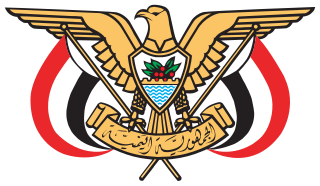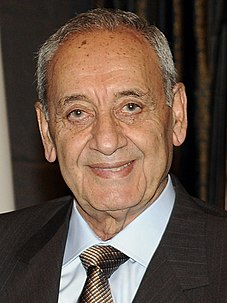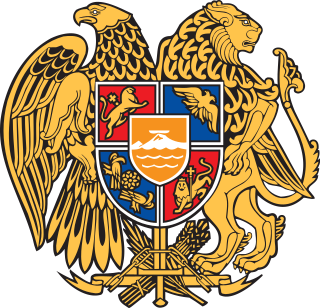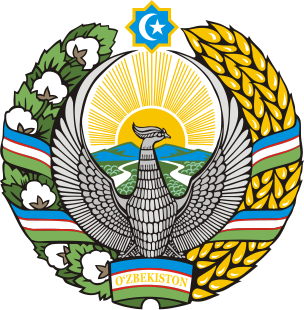
Parliamentary elections were held in Yemen on 27 April 1993, the first after Yemeni unification. The General People's Congress emerged as the largest party, winning 123 of the 301 seats. Voter turnout was 84.8%.

Constituent Assembly elections were held in the Democratic Republic of Georgia between 14 and 16 February 1919. The electoral system used was party-list proportional representation using the D'Hondt method in a single nationwide district. The result was a victory for the Social Democratic Labour Party of Georgia, which won 81% of the vote, and 109 of the 130 seats. In by-elections held in spring, they lost four seats and the Armenian Party in Georgia - Dashnaktsitiuni and the Georgian National Party both won seats.

General elections were held in Turkey on 15 October 1961. The electoral system used was party-list proportional representation with the D'Hondt method in 67 electoral districts. In order to receive seats in a district, parties needed to win a Hare quota in that district. The result was a victory for the Republican People's Party, which won 173 of the 450 seats. Voter turnout was 81.4%.

General elections were held in Turkey on 21 July 1946, the first multi-party elections in the country's history. The multiple non-transferable vote electoral system was used. The result was a victory for the Republican People's Party, which won 395 of the 465 seats.

General elections were held in Turkey on 14 May 1950, using the multiple non-transferable vote electoral system. The result was a landslide victory for the opposition Democratic Party, which won 408 of the 487 seats.

Parliamentary elections were held in South Yemen between 16 and 18 December 1978. The first elections since independence in 1967, they saw 175 candidates contest the 111 seats. Voter turnout was reported to be 91.27%.

Parliamentary elections were held in South Yemen between 28 and 30 October 1986, having originally been scheduled for 1983, but later postponed. A total of 181 candidates contested the 111 seats. Although the country was a one-party state at the time, with the Yemeni Socialist Party as the sole legal party, independents were also able to run as candidates.
General elections were held in Lebanon between 24 March and 7 April 1968. Independent candidates won the majority of seats, although many of them were considered to be members of various blocs. Voter turnout was 49.6%.
General elections were held in Lebanon between 16 and 30 April 1972. Independent candidates won the majority of seats, although most of them were considered members of various blocs. Voter turnout was 54.4%.
General elections were held in Lebanon between 23 August and 11 October 1992, the first since 1972. Independent candidates won the majority of seats, although most of them were considered members of various blocs. Voter turnout was 30.3%.
General elections were held in Lebanon between 18 August and 15 September 1996. Independent candidates won the majority of seats, although most of them were considered members of various blocs. Voter turnout was 43.3%.

General elections were held in Lebanon between 27 August and 3 September 2000. Independent candidates won the majority of seats, although most of them were considered members of various blocs. Voter turnout was 40.5%.

Parliamentary elections were held in Armenia on 20 May 1990, although further rounds were held on 3 June and 15 July due to low turnouts invalidating earlier results and by 21 July 64 seats were still unfilled, with 16 still unfilled in February the following year. The result was a victory for the Communist Party of Armenia, which won 136 of the 259 seats. The remaining candidates were all officially independents, but almost all were members of the Pan-Armenian National Movement. Overall voter turnout was 60.2%.

Parliamentary elections were held in Armenia on 30 May 1999. There were 75 constituency seats and 56 elected on a national basis using proportional representation. The result was a victory for the Unity Bloc, which won 62 of the 131 seats. Overall voter turnout was 51.7%.

Parliamentary elections were held in Georgia on 31 October 1999, with second rounds in some constituencies on 7 and 14 November, and repeat elections in two constituencies on 28 November. The result was a victory for the Union of Citizens of Georgia, which won 131 of the 235 seats. Voter turnout was 67.9%

Parliamentary elections were held in Kyrgyzstan on 20 February 2000, with a second round on 12 March. The Union of Democratic Forces, an alliance of Asaba, the Party of Economic Revival, the Social Democratic Party and the Unity Party, emerged as the largest bloc in Parliament, with 12 of the 105 seats. Voter turnout was 64.4%.

Parliamentary elections were held in Tajikistan on 27 February 2000, with a second round in 11 of the 41 constituencies on 12 March. The result was a victory for the People's Democratic Party of Tajikistan, which won 36 of the 63 seats. Voter turnout was 93.4%.

Parliamentary elections were held in Turkmenistan on 11 December 1994. All 50 seats were won by the Democratic Party of Turkmenistan, the only party registered prior to the elections, with only one of the 50 constituencies being contested. Voter turnout was 99.8%.

Parliamentary elections were held in Uzbekistan on 25 December 1994, with a second round held in 39 constituencies on 8 January 1995 and seven constituencies on 22 January. The election was contested by 634 candidates, 250 nominated by local councils, 243 members of the People's Democratic Party of Uzbekistan, and 141 Progress Party of the Fatherland members. The majority of seats were won by local council nominees, whilst the People's Democratic Party emerged as the largest party.

Parliamentary elections were held in Uzbekistan on 5 December 1999, with a second round in 66 of the 250 constituencies on 19 December. The People's Democratic Party of Uzbekistan emerged as the largest party, with 49 of the 250 seats. Voter turnout was 95.0%.














